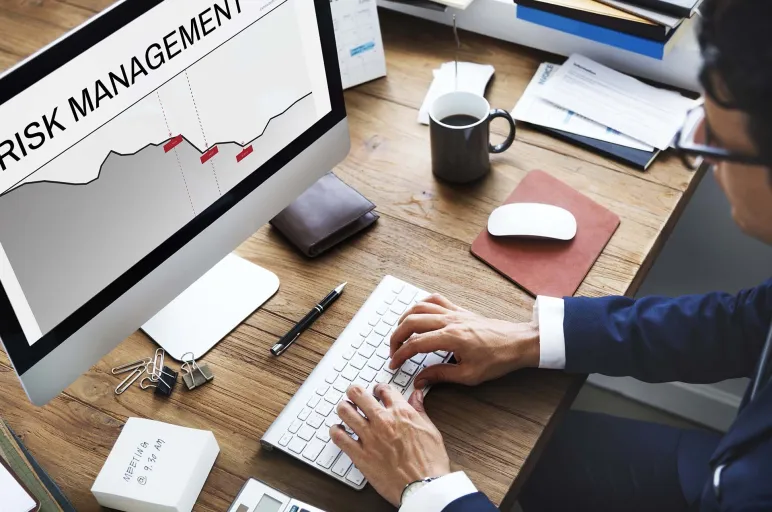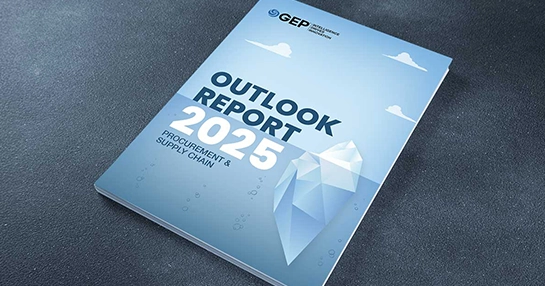
From Supplier Selection to Performance Monitoring – How AI is Transforming Risk Management
- Assessing supplier risks is vital amid growing uncertainty in the business environment.
- AI collates and analyzes data from multiple sources to proactively identify emerging risks.
- Unlike traditional methods that rely on historical data and incidents, AI looks at real-time data, market conditions and external factors to identify supplier risks.
October 08, 2025 | Procurement Software 4 minutes read
Even today, many businesses don’t have a clear idea of the risks associated with their supply chain. And frankly, some don’t even bother.
Such an attitude can prove risky amid growing uncertainty in the business environment. Not only are these businesses caught off guard when there is a sudden disruption, they also risk falling behind their competitors.
Now here is some good news. The evolution of technology has made it easy for all these businesses to identify supplier risks.
How do these technologies work? Can they proactively identify risks? Let’s find out.
It All Starts with Choosing the Right Suppliers
From financial health, operational stability, and regulatory compliance to cybersecurity posture, AI analyzes several aspects of vendor performance to assign risk scores. By carefully examining these risk scores, procurement can identify high-risk suppliers early, negotiate better terms, and make data-driven vendor selection decisions. Why is this important? Because choosing reliable vendors is half the job done in supplier risk management.
A leading CPG company, for example, leverages AI to quickly identify alternative supply sources. AI scans data on suppliers’ financial stability, sustainability ratings, customer reviews, intellectual property details and other criteria. Such a comprehensive data collection helps the CPG giant identify potential new suppliers swiftly.
Another leading market player uses AI-powered tools to analyze granular supplier data at the SKU level, unlike traditional methods that focus on high-level purchasing categories and aggregate spending.
Also, it’s not just about risk scores and performance data analysis. It’s also the speed at which AI provides the analysis that makes all the difference. Equipped with large language models and machine learning algorithms, AI provides recommendations for supplier selection and associated risks much faster than traditional methods. This speed to value improves decision-making.
Struggling to Identify Supplier Risks?
Get AI-Powered Technology to Proactively Identify Risks and Mitigate Their Impact
Let’s now look at some more use cases.
AI Has Nailed Risk Management
At the outset, AI has changed the approach to risk management. Instead of looking merely at historical data and performance, AI brings real-time data, market intelligence and external factors into play.
AI-powered systems eliminate risks from vendor contracts by checking any non-compliant clauses and suggesting risk-mitigating amendments.
AI also keeps pace with changing market conditions and circumstances over time, ensuring that risk evaluations are carried out on an ongoing basis. AI tracks market conditions and external factors in real time. In this process, it incorporates recent incidents, financial stability, operational intricacies, and cybersecurity considerations into a comprehensive supplier risk profile evaluation.
AI-driven solutions automate compliance monitoring by continuously scanning regulatory databases and flagging updates that impact vendor relationships. They can also assess supplier compliance with new requirements and generate real-time reports.
Gen AI can quickly review existing contracts, extract key information and highlight any inconsistency or vague language. Large language models can also identify missing controls or enhancements needed in existing contracts to create a more robust framework.
How Predictive Analytics Helps
How does a business identify a vendor’s declining performance metrics or delivery delays? This is where predictive analytics comes into play.
Predictive analytics can analyze historical data, market trends and external factors to draw patterns and correlations that indicate potential risks. It can provide valuable insights to enhance decision-making. It can even help improve supplier performance by analyzing delivery data, goods quality and compliance with contractual terms.
By integrating AI and ML with predictive analytics, businesses can engage in real-time monitoring of supply chains. With automated systems tracking market conditions, supplier performance, and external factors, teams can anticipate as well as respond swiftly to disruption and minimize any impact on operations.
Can You Look Beyond Your Tier 1 Suppliers?
Most risks arise from a lack of visibility into supply chain operations, especially beyond tier 1 suppliers.
70% of Procurement Leaders’ respondents cite insufficient visibility into tier 3 suppliers as the primary cause of supply chain risks. Around 40% of respondents say the same thing about their tier 2 suppliers.
To understand where these risks originate, procurement must have end-to-end visibility of the supply chain.
101 Top AI Use Cases in Procurement
Tested, proven, and emerging applications of AI in procurement
Solid Data Foundation is Key
It’s clear that AI can take supplier risk management to the next level. But what do AI algorithms need to make accurate predictions? Data, of course. But it should be high-quality data. If it’s outdated, biased or inconsistent, the analysis and prediction will also not be accurate.
Strong data governance is vital to ensure that AI has the precise data it needs to accurately predict. You must also invest in training AI models to improve their predictive capabilities over time.



